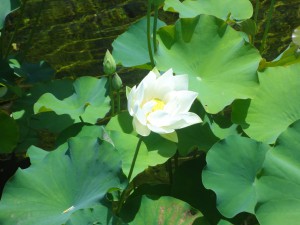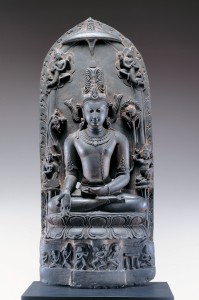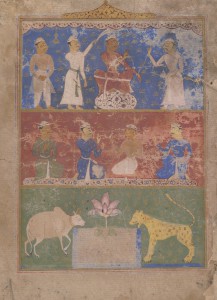 Yesterday was a positively beautiful day. With the sunshine warming me through wispy clouds and a cool breeze gently carrying the air, I slowly strolled past the reflecting pool. Shallow and clear, the pool is home to tall grasses and floating water lilies, but my gaze lingered on the lotus. The bright white petals, blossoming from thin, green stems, fluttered in the wind.I soon discovered that the lotus has a depth of history and meaning more beautiful than the flower itself.
Yesterday was a positively beautiful day. With the sunshine warming me through wispy clouds and a cool breeze gently carrying the air, I slowly strolled past the reflecting pool. Shallow and clear, the pool is home to tall grasses and floating water lilies, but my gaze lingered on the lotus. The bright white petals, blossoming from thin, green stems, fluttered in the wind.I soon discovered that the lotus has a depth of history and meaning more beautiful than the flower itself.
The reflecting pool is not the only place the sacred lotus appears at VMFA. According to Associate Curator of South Asian and Islamic Art, John Henry Rice, “The lotus is one of the most prevalent motifs in Indian art… India’s indigenous religions have frequently employed the auspicious emblem in their theology and art. Emerging from the deep mud at the bottom of pond, growing upward through murky water, and surfacing into bright sunlight that will encourage its beautiful flower buds to burst open, the lotus is a metaphor for the human pursuit of enlightenment.”

Bangladesh, South-central Bengal, mid-11th century Lokanatha Black phyllite 39 1/4″ H x 17″ W x 5″ D 99.70 cm x 43.18 cm x 12.7 cm Virginia Museum of Fine Arts, Richmond. Gift of the Council of the Virginia Museum of Fine Arts and the Juan March Foundation with additional funds from the Arthur and Margaret Glasgow Fund. Photo: Katherine Wetzel © Virginia Museum of Fine Arts
The lotus can be found in various sculptures, paintings, textiles, and other decorative objects within VMFA’s South Asian galleries. In the Indian sculpture gallery, the lotus is depicted around one figure of the Buddhist deity, Lokanatha, (left) and in another carving of Vishnu, a subject from Hindu mythology which is on view in the South Asian galleries. The lotus flower is also featured on a page from a North Indian painted manuscript depicting an allegory from the text (below), which is meant to communicate the peace and harmony within the kingdom.

Page from the “Prince of Wales” Chandayan:
The Khan-e-Jahan Dispenses Justice, ca. 1525–60
The flower is also a staple within theMaharaja: The Splendor of India’s Great Kings exhibition. The lotus is engraved on the silver carriage of a maharaja, and the golden throne of Ranjit Singh was designed with two tiers of lotus petals, an ancient symbol of purity and creation. The image of a lotus flower was also delicately carved onto the emerald on Maharaja Bhupinder Singh’s belt buckle.
Though it is often referred to as the East Indian lotus, VMFA horticulturist, Tom Brinda, says “…in fact the species is native all across Asia, is featured in Chinese and Japanese gardens, and has been spread elsewhere, too.” With its appearance in the art and culture of multiple countries, especially India, the lotus certainly deserves to be appreciated as more than just a pretty flower.
– Noelle Staib, Communications and Marketing Intern, with information from John Henry Rice, Associate Curator of South Asian and Islamic Art, and Tom Brinda, VMFA horticulturist